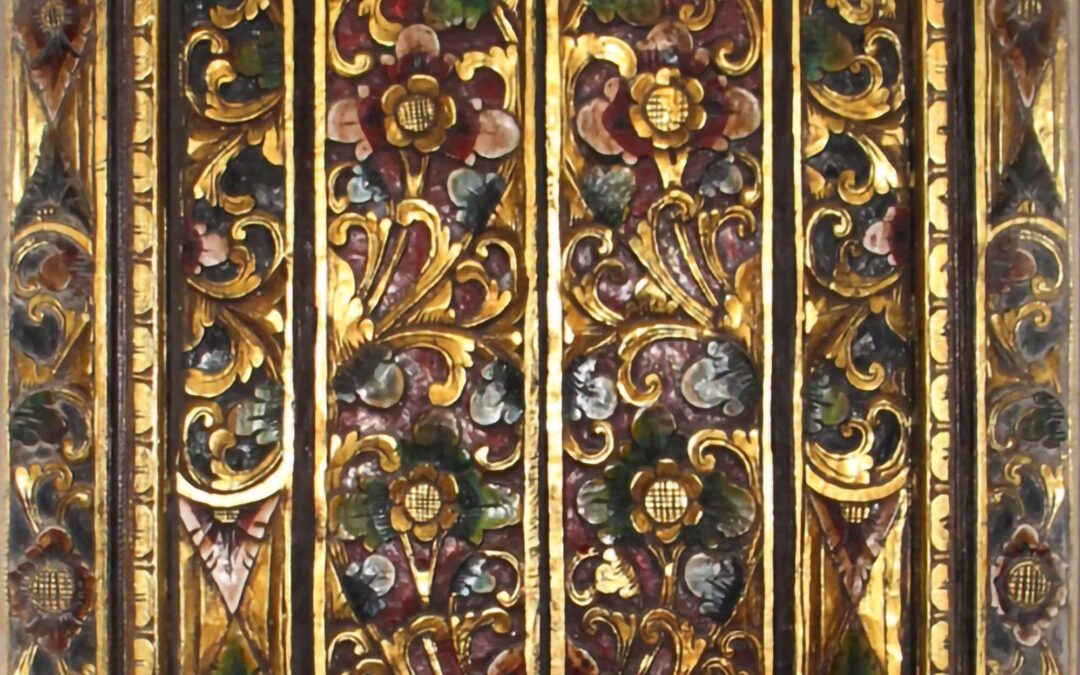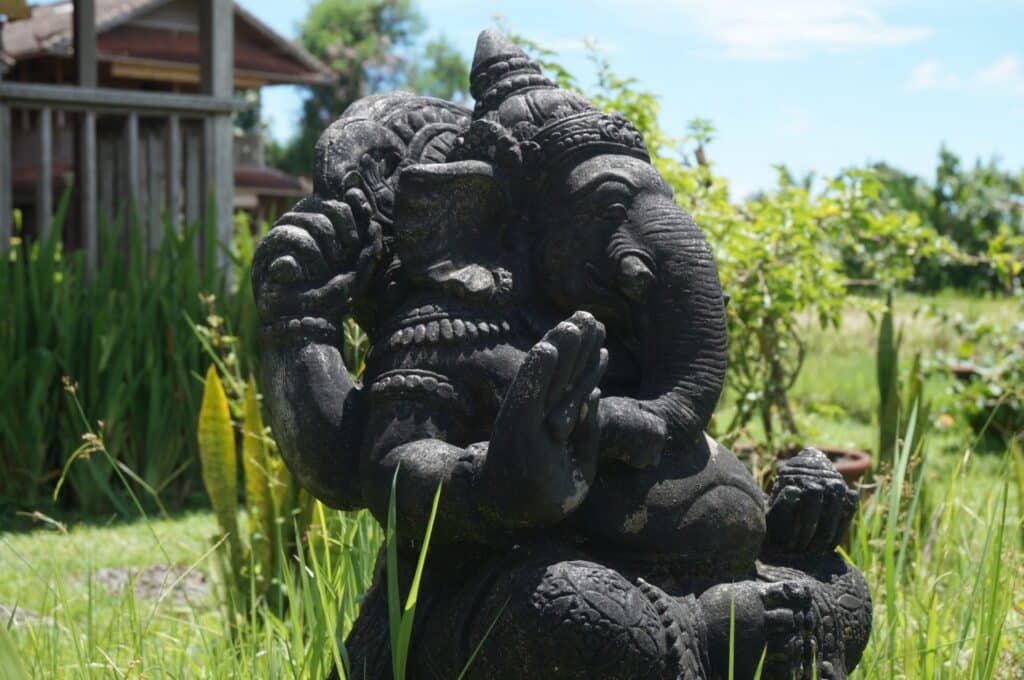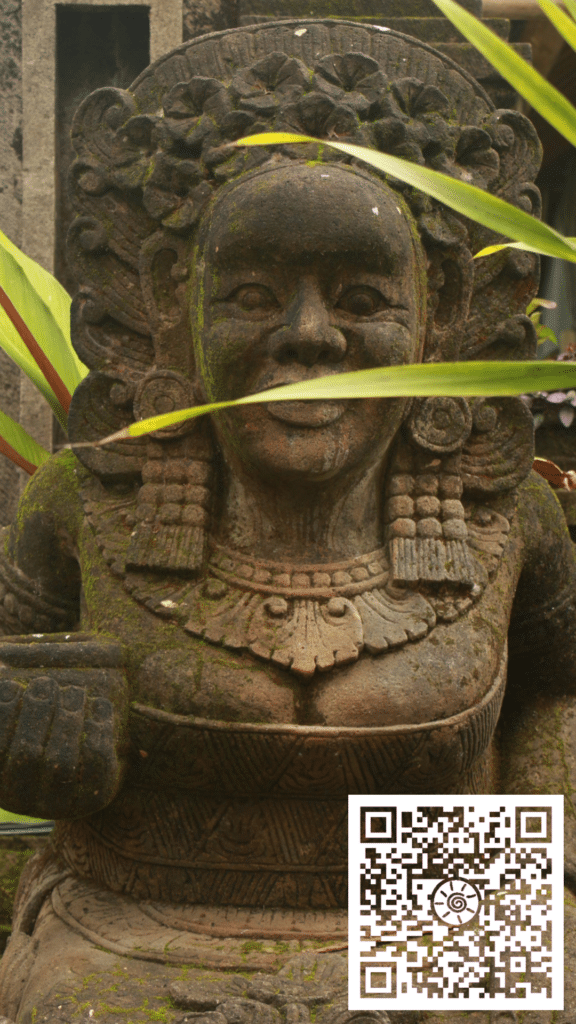Bali has long been known as a haven for artisans and Balinese crafts have been prized around the world for generations. One can’t help but be captivated by the intricate beauty of Balinese handicrafts, from gorgeous silver jewelry with that unique Balinese look, to the famous intricately carved windows and doors found in Balinese houses and homestays. Each piece is a testament to the island’s rich cultural heritage.
Celuk is renowned as the “silver village” of Bali, and for a good reason. The craftsmen here have mastered the art of creating stunning silver jewelry, from intricate rings to delicate necklaces. To those who know, the fine braided, dotted, and curvy lined aesthetic is unmistakably Balinese. Beyond just being decorative, many of these ornaments also hold a spiritual significance for the Balinese, with many locals wearing pieces as protective amulets. For a wearable bit of Balinese culture, you can find tinkly-belled baby bangles, and ornate box pendants to hold your lucky charms.
Travel a bit closer to Ubud, and you’ll find yourself in Mas, the village of woodcarvers. Here, artisans breathe life into blocks of wood, turning them into exquisite works of art. Their subjects range from the serene faces of Buddha or scenes of Ganesha sitting on a lotus, to the whimsical shapes of animals and mystical creatures. Mas’ woodcarvers have honed their skills over the years, showcasing their expertise in the intricate details and rich textures of their carvings. Often carved from a single piece of creamy Panggal Buaya (crocodile wood) or dramatically striped brown to black Sono wood, Balinese wood carvings are a cornerstone of the local handicraft market.
Batu Bulan, another Balinese village close to the Ubud area, is known for its remarkable stone carving. Here, the volcanic rock that abounds on the island is transformed into stunning sculptures and intricate statues. Balinese stone carvers are adept at creating not only intricate designs but also life-sized statues and fountains that grace temples and homes across the island. They are often decorated with deities, mythological creatures, and other symbols of spirituality, reinforcing Bali’s connection to its rich Hindu heritage.
Once you’re in this central part of the island, you can’t miss out on a trip into Ubud itself. So famous for culture, painting, dance and more that it is often called “The Cultural Center of Bali.” If you can stand the traffic, you’re in for charming street markets, historical temples and palaces, cosmopolitan restaurants and shopping and, of course, the famous Monkey Forest.
Journey north, past the picturesque Tegallalang Rice fields to Tampak Siring, and the enchantment continues, as you enter the world of horn and bone carvings. This unique art form showcases the island’s strong connection with nature, with artisans using buffalo horn and cattle bone to create delicate pieces that tell stories of nature and the spirit world. The carving of bone and horn is meticulous, requiring skilled hands to transform these materials into intricate figurines and ornaments.
Every piece of traditional Balinese handicraft is more than just an item; it is a piece of the island’s soul. The people of Bali have always seen their crafts as a means of honoring their culture and spirituality. Beyond their aesthetic appeal, these handicrafts play an integral role in the daily lives of the Balinese. They are used in rituals, celebrations, and ceremonies, serving as a bridge between the material and the spiritual worlds.
In a world where mass-produced goods have become the norm, the traditional Balinese handicrafts offer a refreshing glimpse into the art of slow, painstaking, and meaningful craftsmanship. The artisans of Celuk, Mas, Tampak Siring, and Batu Bulan are the torchbearers of a tradition that has been passed down through generations. Their work reflects not just the beauty of Bali but also the island’s enduring spirit.
So, the next time you find yourself on this enchanting island, take a moment to explore these villages and witness the magic that unfolds within their humble workshops. As you hold a piece of traditional Balinese craftsmanship in your hands, you are not just acquiring a souvenir; you are connecting with a culture that cherishes the beauty and spiritual significance of artistry. Bali’s handicrafts are not just items; they are portals into a world of tradition, devotion, and exquisite craftsmanship.
Book a Custom Day Tour at Bali Sunrise Trekking & Tours



